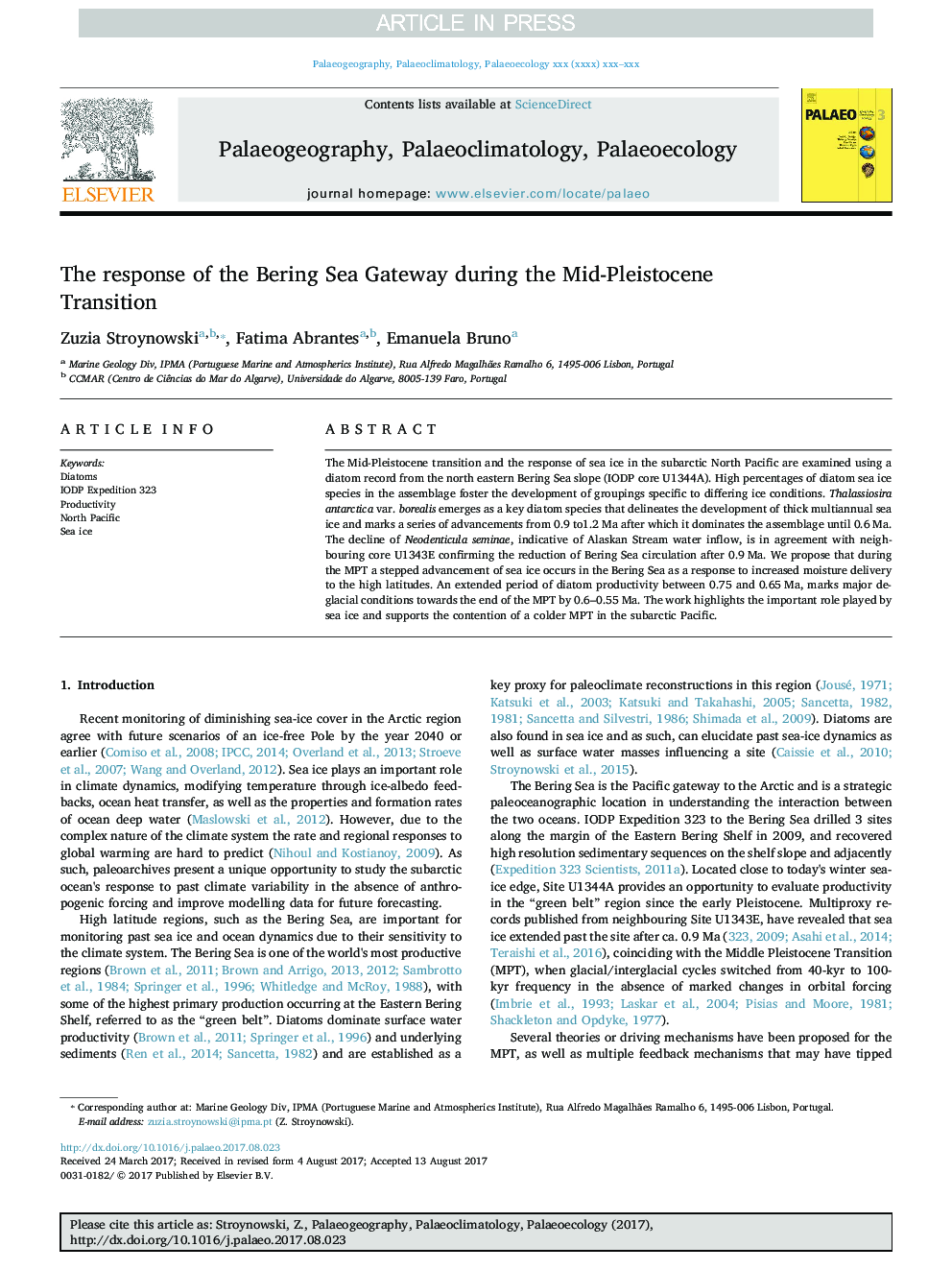| Article ID | Journal | Published Year | Pages | File Type |
|---|---|---|---|---|
| 8868746 | Palaeogeography, Palaeoclimatology, Palaeoecology | 2017 | 12 Pages |
Abstract
The Mid-Pleistocene transition and the response of sea ice in the subarctic North Pacific are examined using a diatom record from the north eastern Bering Sea slope (IODP core U1344A). High percentages of diatom sea ice species in the assemblage foster the development of groupings specific to differing ice conditions. Thalassiosira antarctica var. borealis emerges as a key diatom species that delineates the development of thick multiannual sea ice and marks a series of advancements from 0.9 to1.2Â Ma after which it dominates the assemblage until 0.6Â Ma. The decline of Neodenticula seminae, indicative of Alaskan Stream water inflow, is in agreement with neighbouring core U1343E confirming the reduction of Bering Sea circulation after 0.9Â Ma. We propose that during the MPT a stepped advancement of sea ice occurs in the Bering Sea as a response to increased moisture delivery to the high latitudes. An extended period of diatom productivity between 0.75 and 0.65Â Ma, marks major deglacial conditions towards the end of the MPT by 0.6-0.55Â Ma. The work highlights the important role played by sea ice and supports the contention of a colder MPT in the subarctic Pacific.
Related Topics
Physical Sciences and Engineering
Earth and Planetary Sciences
Earth-Surface Processes
Authors
Zuzia Stroynowski, Fatima Abrantes, Emanuela Bruno,
